Ethiopia – a Tourist Paradise.
Situated in East Africa, Ethiopia spans an impressive 1,128,176 square kilometers (435,606 square miles), embracing a total population of 74,777,981. Yet, it is not merely the vastness of its geography that defines Ethiopia but the rich layers of history etched into its very soil.
Ethiopia stands as a living testament to time, its antiquity stretching beyond the bounds of imagination. Once known as Abyssinia, its cultural roots and traditions have woven a tapestry of history spanning over 3,000 years. Deep within this land of mystery and contrasts lies the enigma of Lucy, or Dinkenesh, meaning ‘thou art wonderful’ in the eloquent language of the Ethiopians. Lucy’s fossilized remains were unearthed in a corner of this captivating country, offering a glimpse into an era that predates recorded history.
Ethiopia is a realm of remote and wild landscapes, where nature’s extremes unfold in breathtaking panoramas. Among its natural wonders stand some of the highest and most awe-inspiring places on the African continent. The Simien Mountains, with their jaggedly carved peaks, stand tall as guardians of time, recognized by UNESCO as a World Heritage Site. Conversely, the Danakil Depression, a hot and mesmerizing expanse, reveals some of the lowest points on the continent. Here, sulphur fumaroles emit ethereal vapors, and the lunar-like landscape beckons adventurers to explore its otherworldly terrain.
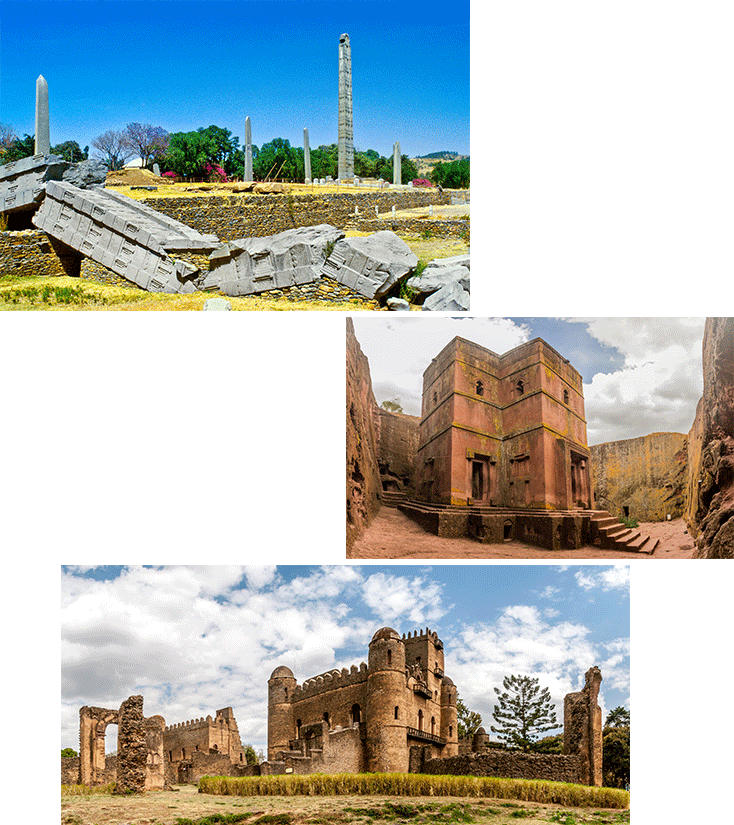
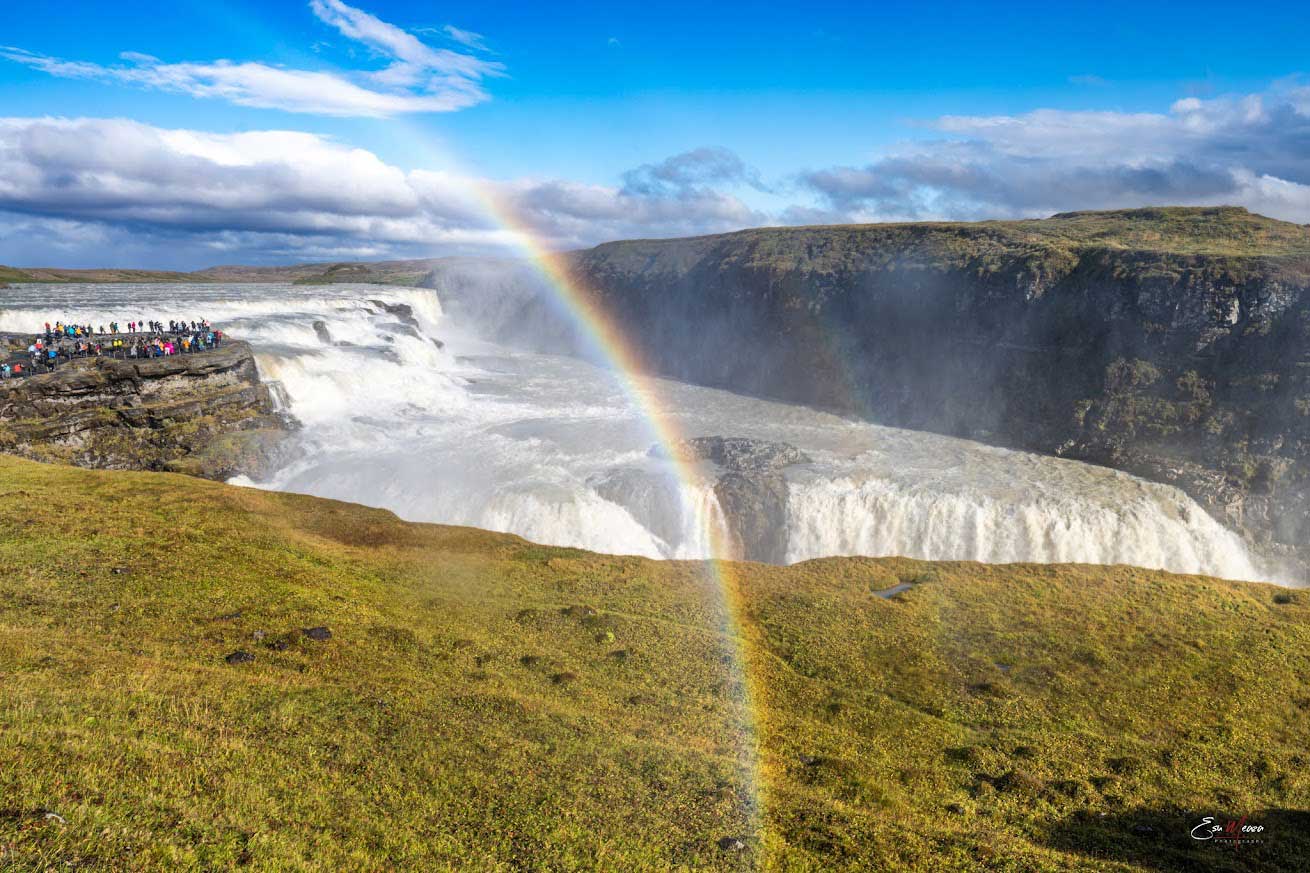
Ethiopia – a Tourist Paradise.
In a striking distinction from many African nations, Ethiopian proudly upheld its independence, resisting the chains of colonial rule. Even during the tumultuous times of World War II, the spirit of resilience prevailed, with the exception of the brief but impactful Italian occupation from 1936 to 1941. This resilience not only preserved Ethiopia’s sovereignty but also solidified its status as a beacon of endurance in the face of external pressures.
Ethiopia, with its ancient roots and untamed landscapes, invites the curious traveler to embark on a journey through time. From the echoes of Abyssinia’s past to the majestic peaks and surreal depths of its natural wonders, this land unfolds as a captivating narrative of endurance, wonder, and timeless beauty.
Facts about Ethiopia
Ethiopia is a country with a rich history, diverse culture, and stunning landscapes. Here are some key facts about Ethiopia:
-
Geography:
- Ethiopia is a landlocked country located in the Horn of Africa in the eastern part of the continent.
- It is the second-most populous country in Africa, after Nigeria.
-
Capital and Cities:
- The capital city of Ethiopia is Addis Ababa, which also serves as the political, cultural, and economic hub of the country.
- Other major cities include Dire Dawa, Bahir Dar, Gondar, and Mekelle.
-
Language:
- Ethiopia is known for its linguistic diversity. Amharic is the official language, and there are over 80 different ethnic groups, each with its own language.
-
Religion:
- Ethiopia is one of the earliest countries to adopt Christianity. Christianity has deep historical roots in the country.
- Ethiopia is the “land of the first Hijra”. According to Islamic tradition, during the early years of Islam, followers of the Prophet Muhammad faced persecution in Mecca. In order to escape this persecution, some of the early Muslims sought refuge in the Kingdom of Aksum, which is believed to correspond to the region of modern-day Ethiopia. The event is known as the “First Hijra,” and it is considered a significant event in Islamic history. The ruler of Aksum, King Negus (also known as Ashama ibn Abjar), is said to have welcomed the Muslim refugees and granted them protection. This event is often cited as an example of religious tolerance and hospitality.
-
History:
- Ethiopia has a rich historical heritage and is one of the oldest nations in the world. It is the only African country that was never formally colonized, despite the Italian occupation from 1936 to 1941.
- The ancient city of Aksum was once the heart of a powerful kingdom and is a UNESCO World Heritage Site.
-
Lucy and Human Origins:
- Ethiopia is often referred to as the “cradle of humanity.” The fossilized remains of “Lucy,” a hominid estimated to be around 3.2 million years old, were discovered in the Ethiopian region of Afar in 1974.
-
Unique Calendar:
- Ethiopia follows its own unique calendar, known as the Ethiopian calendar, which is approximately seven to eight years behind the Gregorian calendar. New Year, called Enkutatash, is celebrated in September.
-
Diverse Landscapes:
- The country is known for its diverse landscapes, ranging from the highlands to lowlands, plateaus, and the Great Rift Valley. Ethiopia is home to stunning natural features, including the Simien Mountains and the Danakil Depression, one of the hottest and lowest places on Earth.
-
Coffee Origin:
- Ethiopia is often credited as the birthplace of coffee. Legend has it that coffee was discovered by an Ethiopian goat herder named Kaldi in the 9th century.
-
UNESCO World Heritage Sites:
Ethiopia is home to several UNESCO World Heritage Sites, including Lalibela with its rock-hewn churches, the Aksum Obelisks, the Harar Jegol (the old walled city of Harar), and the Simien Mountains National Park.
Cultural Diversity
Ethiopian culture is many-sided, reflecting the ethnic diversity of the country; with over 80 different ethnic groups priding themselves in their own individual language, culture and tradition. Nestled within the heart of the Horn of Africa, Ethiopia emerges as a tourist paradise, boasting a cultural mosaic that spans over 3,000 years. The country’s cultural landscape is as diverse as its topography, with over 80 different ethnic groups contributing to a rich tapestry of languages, traditions, and unique customs.
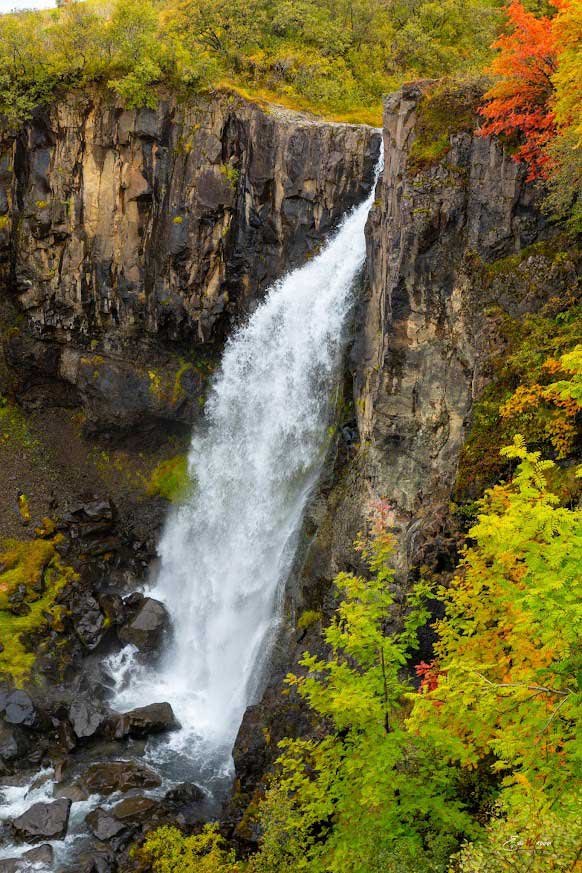
Archeological
Ethiopia is a treasure trove of ancient wonders and historical artifacts, revealing a rich history of human civilization that stretches back thousands of years. The country has numerous archaeological sites that provide valuable insights into the evolution of human cultures. Notable highlights include the ancient city of Aksum, home to impressive obelisks and archaeological ruins, and the rock-hewn churches of Lalibela, a UNESCO World Heritage Site. The Afar Triangle in Ethiopia is also renowned for yielding important fossil discoveries, including the famous hominid “Lucy,” shedding light on the early stages of human evolution. Ethiopia’s archaeological landscape showcases a fascinating blend of ancient civilizations, religious heritage, and significant contributions to the understanding of human history.
Lucy
The discovery of Lucy represents one of the most significant archaeological findings in Ethiopia and has played a crucial role in our understanding of human evolution. Lucy, whose scientific name is Australopithecus afarensis, was discovered in the Afar region of Ethiopia in 1974 by paleoanthropologist Dr. Donald Johanson and his team.
Key details about the Lucy discovery:
- Lucy’s fossilized remains were found at the Hadar archaeological site in the Afar Triangle of Ethiopia.
- Lucy is believed to have lived approximately 3.2 million years ago. She belongs to the species Australopithecus afarensis, an early hominid.
- Lucy is considered a pivotal specimen in the study of human evolution. Her relatively complete skeleton provided researchers with valuable insights into the anatomy, locomotion, and lifestyle of early hominids. The discovery suggested that Australopithecus afarensis walked upright on two legs but also had adaptations for tree-climbing.
- The name “Lucy” was inspired by the Beatles song “Lucy in the Sky with Diamonds,” which was playing at the archaeological camp on the evening of the discovery.
- Lucy’s discovery significantly contributed to the understanding of the transition from apes to early humans. The findings provided evidence of bipedalism in a hominid species and expanded our knowledge of the human evolutionary tree.
Lucy’s fossils are housed at the National Museum of Ethiopia in Addis Ababa. The discovery has sparked ongoing research in the region, with numerous other archaeological sites in Ethiopia contributing to our understanding of early human history.
Dallol Depression
Dallol is the world’s only below sea level land volcano. Dallol is in the Danakil depression is the lowest point and the hottest place on earth. Between 1960 and 1966 the annual mean temperature at Dallol was 34 deg.
Erta Ale
Erta Ale is an active shield volcano in the Afar Region of northeastern Ethiopia. It is the most active volcano in Ethiopia. Erta Ale is 613 meters tall, with a lava lake, one of only five in the world, at the summit. It is notable for being the longest existing lava lake, present since the early years of the twentieth century. It is located in the Afar Depression, a desert area and the volcano itself is surrounded completely by an area below sea level.
Semein Mountains National Park
The Semien Mountains are a must for all those interested in wildlife, scenery and spectacular landscapes. The Park has been declared a World Heritage Site by UNESCO. The Semien Mountains constitute one of the major mountain massifs in Africa. The region includes many summits above 4000 meters and culminates in the highest point in Ethiopia, Ras Dejen, at 4620 meters- the fourth highest mountain in Africa. Maximum temperatures during the day are about 15o Centigrade (60o Fahrenheit). At night the temperature usually drops to 3 – 5 o C (35o -40o F). It is home to the endemic mammals of Walia Ibex, Semien Fox, Gelada Baboons and many species of birds and plants apart from its spectacular scenic beauty.
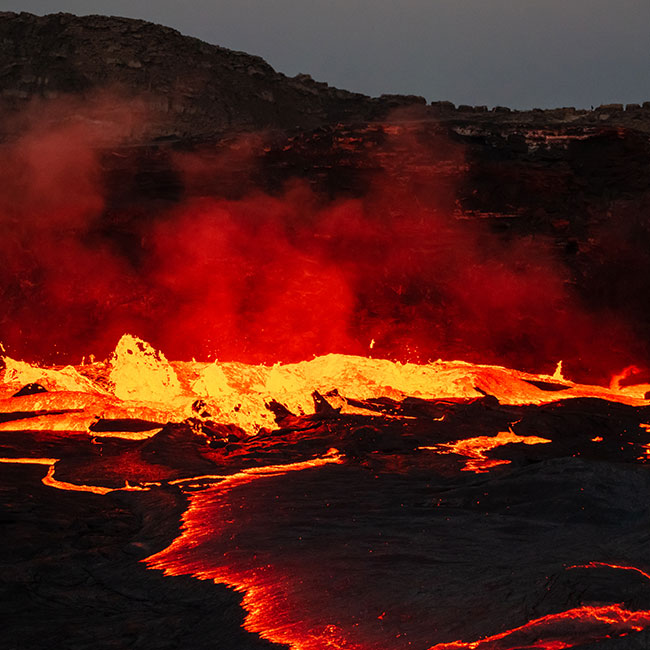
Walia Ibex:
The walia ibex, a member of the goat family, weighs 80 – 125 kg (180 – 280 lb). It dwells on steep cliffs between 2500 – 4500 m (8200 – 14,750′) in regions characterized by Rocky Mountains, gorges, outcrops and loose stony screeds. The walia ibex has been found only in the Simien Mountains in northern Ethiopia in recent times. The walia ibex eats bushes, herbs, lichens, shrubs, grass, and creepers. It is mainly crepuscular. Males tend to form larger groups than females (except during the rut). Females form nursery groups during the birth season, rather than becoming solitary as do many ungulates. It has been suggested that this may be due to the risk of attack from large birds of prey (e.g. eagles and vultures).
Gelada Baboon:
It is common to see troop of Gelada baboons in the Simien Mountains. Found only in Ethiopia’s high country, their ‘sacred heart’ a patch of bare skin on the chest distinguishes them from any other species of baboon.
Red Fox:
Simien wolf, endemic to Ethiopia, also known as the Simien jackal of Abyssinian wolf, is found in greater numbers in the Bale mountains than semen . The animal is the size and color of a European Red Fox, but with long legs, longer muzzle, and a striking black and white tail. The male and female are similar in appearance. Semien Fox feed on rodents, and as a result is mainly found at the higher altitudes where rodents abound. The Sanetti Plateau is an especially good area to see them, but they do occur in higher parts of the mountains, as well as down at Gaysay on rare occasions.
Nyala:
The mountain nyala is endemic to Ethiopia and is limited in its distribution to Ethiopia’s Bale and Arussi provinces. The stately and beautiful mountain nyala, another of Ethiopia ‘s endemic species, is best seen at Dinsho, the Park’s Headquarters. Male mountain nyala are a sepia brown color that slowly gets darker with age, while females are of a pale liver color with a scattering of spots and stripes. The mountain nyala weighs up to 300 kg (660 lb) and stands approximately 135 cm (53″) at the shoulder. It is found in a mosaic of high-altitude woodland, bush, heath, moorland and valley-bottom grassland, from 3000 m (9800′) up to 4200 m (13,800’).
Omo National Park
Omo National Park, the largest in the country, with an area of 4,068 square kilometres Located in the Southern Nations, Nationalities, and Peoples Region on the west bank of the Omo River. It is about 870 kilometers southeast of Addis Ababa. 306 species of birds have been identified here, while large herds of Eland, some Buffalo, Elephants, Giraffe, Cheetah, Lion, Leopard, Burchell’s Zebra are very common. It is a vast expanse of true wilderness, adjacent to the Omo River, which flows southwards into Lake Turkana and is one of the richest and least-visited wildlife sanctuaries in eastern Africa. Eland, oryx, Burchell’s zebra, Lelwel hartebeest, buffalo, giraffe, elephant, waterbuck, kudu, lion, leopard and cheetah roam within the park’s boundaries.
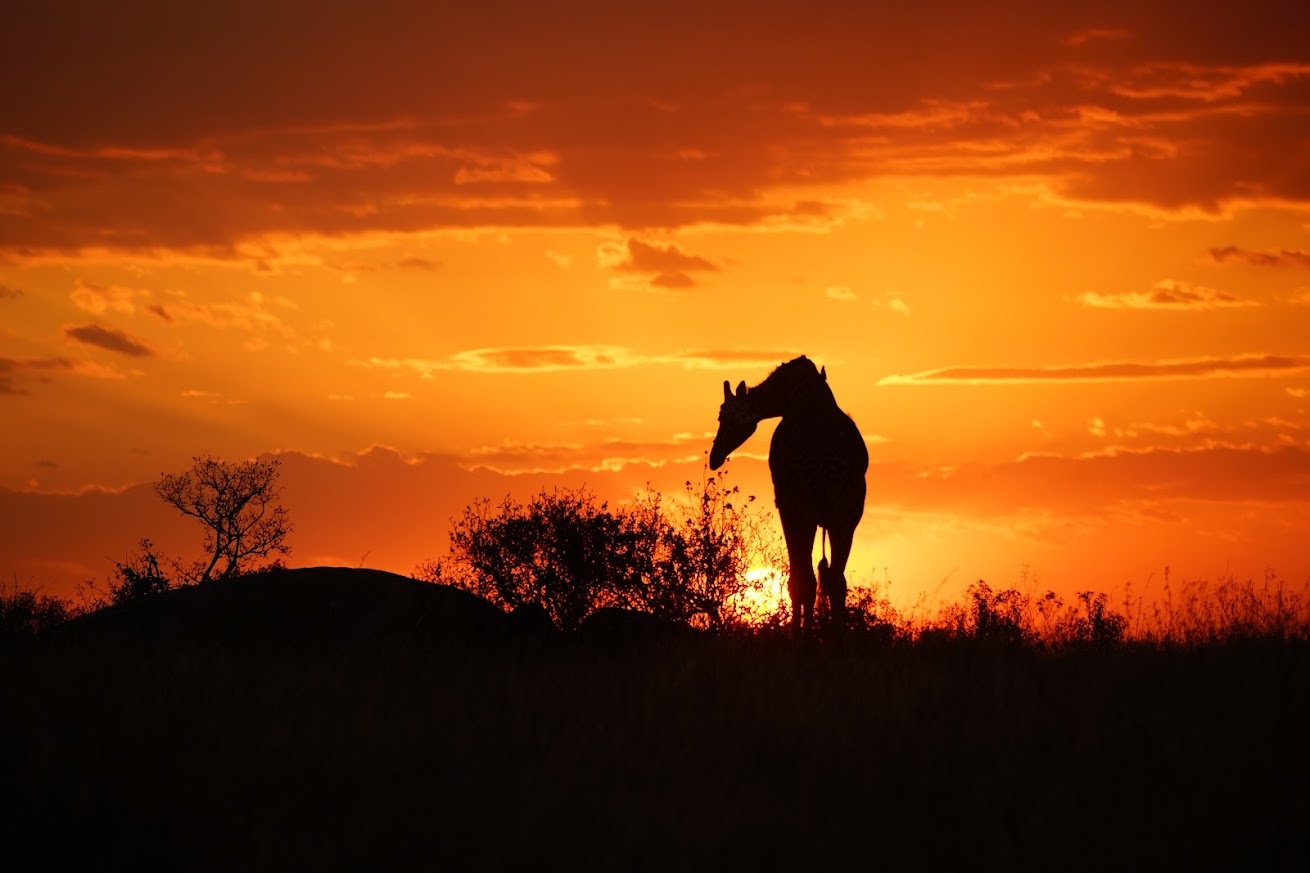
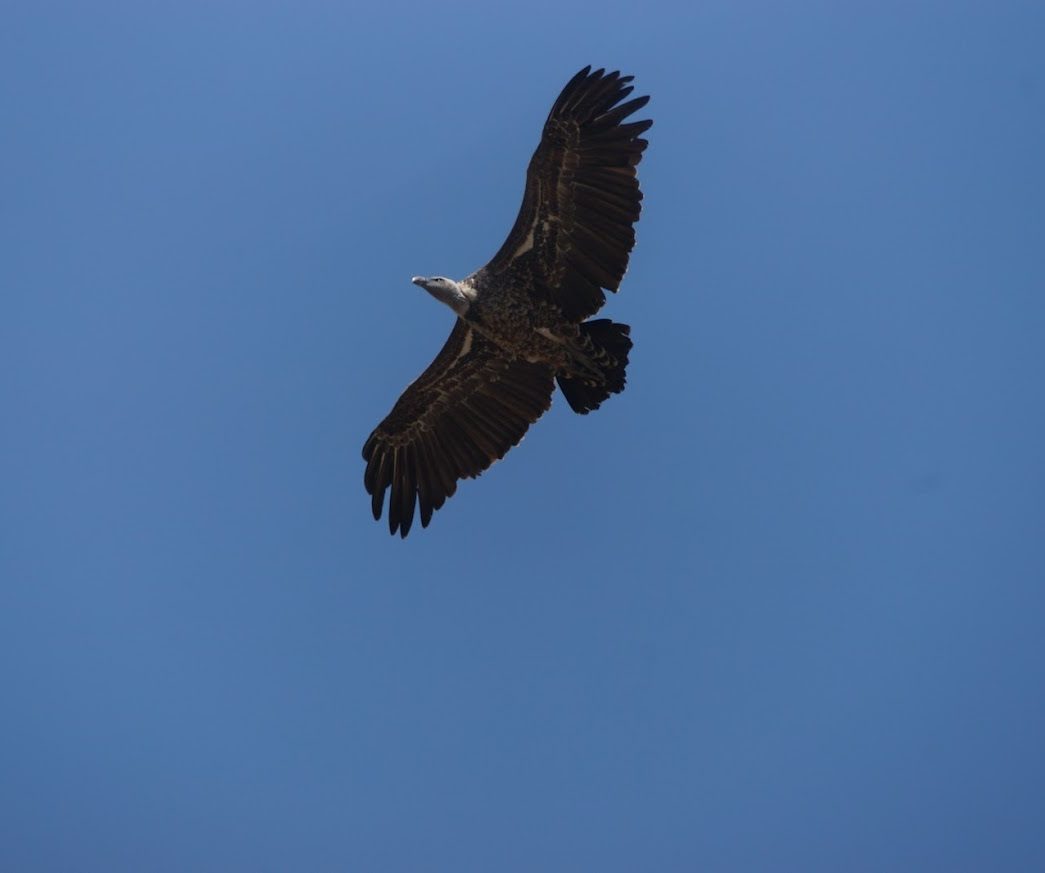
Bale Mountains National Park
The Bale Mountains are a range of mountains in the Oromia Region of southeast Ethiopia, south of the Awash River. They include Tullu Demtu, the second-highest mountain in Ethiopia (4377 meters), and Mount Batu (4307 meters). The Weyib River, a tributary of the Jubba River, rises in these mountains east of Goba. The Bale National Park covers 2,200 square kilometers of these mountains.
The Bale Mountains are home to many of Ethiopia’s endemic animals, notably the Ethiopian Wolf, (Canis simensis), found on the Senetti Plateau. The park also contains the Harenna Forest, situated to the south of the mountains which is a largely unexplored area thought to contain many undiscovered species of reptile as well as lion, leopard and various types of antelope. Besides wildlife the National Park offers exceptional trekking opportunities from the park headquarters at Dinsho. The largest group of Ethiopian Wolves is found here.
Abijatta-Shalla Lakes National Park
Situated in the Great Rift Valley, only 200 kilometers (124 miles) south of Addis Ababa. Using Lake Langano as your base, it is an easy side trip to visit Abijatta-Shalla Lakes National Park, which is 887 square kilometers (550 square miles) in size, 482 (300) of these being water.
Abijatta and Shalla are both terminal lakes but very different in nature. Lake Abijatta is 14 meters (46 feet) deep as opposed to Lake Shalla which has a depth of 260 meters (853 feet). The Park was created for the many aquatic bird species that use the lakes, especially great white pelicans and greater and lesser flamingo. There are over 400 bird species recorded here. The birds use Lake Abijatta as a feeding center while using Lake Shalla ‘s island as breeding site. White-necked cormorant, African fish eagle, Egyptian geese and others are in abundance in the park.
Awash National Park
The Awash National Park is one of the finest reserves in Ethiopia. The Awash River, one of the major rivers of the Horn of Africa, waters important agricultural lands in the north- eastern part of Ethiopia and eventually flows into the wilderness of Danakil Depression. The dramatic Awash Falls as the river tumbles into its gorge is the site not to be missed in the national park. A special attraction is the beautiful clear pools of the hot springs.
Awash National Park, surrounding the dormant volcano of Fantale, is a reserve of arid and semi-arid woodland and Savannah, with riverine forests along the Awash River. Forty-six species of animals have been identified here, including Beisa Oryx and Swayne’s Hartebeest. The bird life is prolific especially along the river and in amongst the 392 species recorded. 350 species of birds are recorded in the park.
Sof Omar
Sof Omar, a Muslim village in Bale region, is the site of an amazing complex of natural caves, cut by the Weyb River as it found its way into the nearby mountains. The settlement, which is a religious site, is named after a local Sheikh.
Visitors to Sof Omar make their way-armed with torches and official map underground, far into the bowels of the earth, beside a subterranean stream, and there one can see an extraordinary number of arched portals, high, eroded ceilings and deep, echoing chambers.
Mago National Park
2,162 sq km, 770km southwest of Addis Ababa, on east bank of Omo River. 450-2,528m. highest point is Mount Mago Mainly grassing savannah, some forested areas around rivers. Conservation area for plains animals, 56 species of mammals: buffalo, giraffe, elephant, lelwel hartebeest, lion, cheetah, leopard, zebra, gerenuk, oryx.
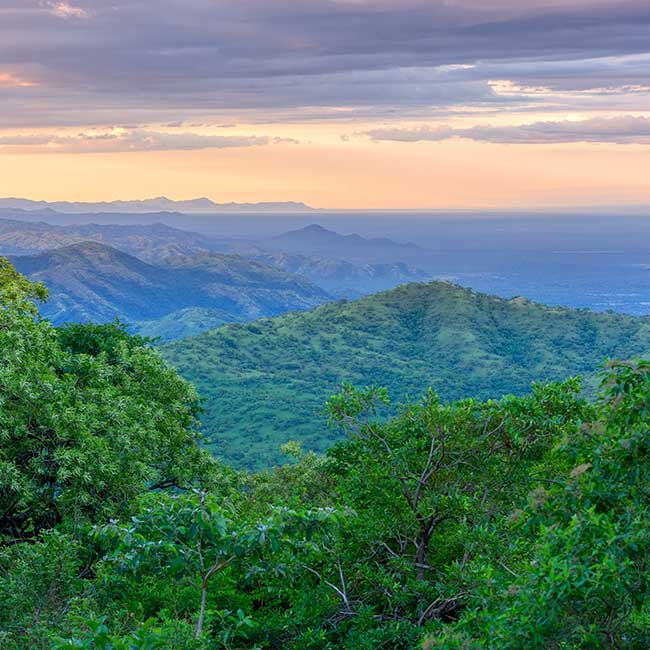
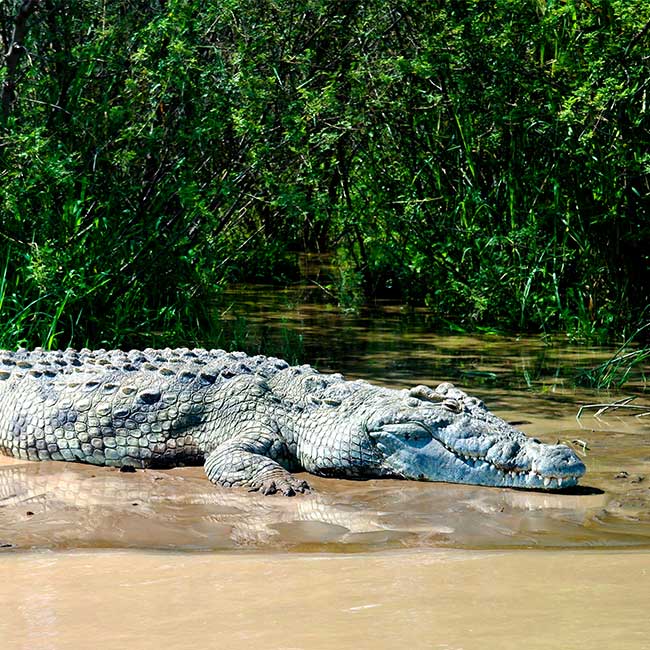
Nechisar National Park
Situated 510km south of Addis near the town of Arba Minch, in between Lakes Abaya and Chamo. A wide variety of plains game roams freely amongst 514m2 of savannah, dry bush and groundwater forest, which are also the habitat of 188 recorded species of birds. Animals to be seen are Bushbuck, Swayne’s Hartebeest, Burchell’s Zebra, Grant’s Gazelle, Guenther’s Dik-dik, Greater Kudu, Crocodile, Anubis Baboon, Grey Duiker. Birds seen include Red-billed Hornbill, Grey Hornbil,l Fish Eagle, Kori Bustard, Abyssinian Ground Hornbill..
A backdrop of hills and mountains combine to make this one of the most attractive national parks in Ethiopia, and its location makes it very accessible. In the far eastern part of the park hot springs bubble to the surface.
Lakes Abaya and Chamo are the twin rift valley lakes separated by a neck of land better known as a Bridge of Heaven “. They are the integral part of the park. The park is home to Burchell’s Zebra, Grant’s Gazelle, greater Kudu and others. Various species of birds and crocodiles reflect the park’s different habitat.
The 188 bird species – including two endemics of the area are quite varied, reflecting the different habitats within the park. Both the red-billed and the gray hornbill are common here, and the Abyssinian ground hornbill is also seen. Also common are fish eagle, kingfishers, and rollers. Various bustard species are found in the park including the large and impressive Kori.
